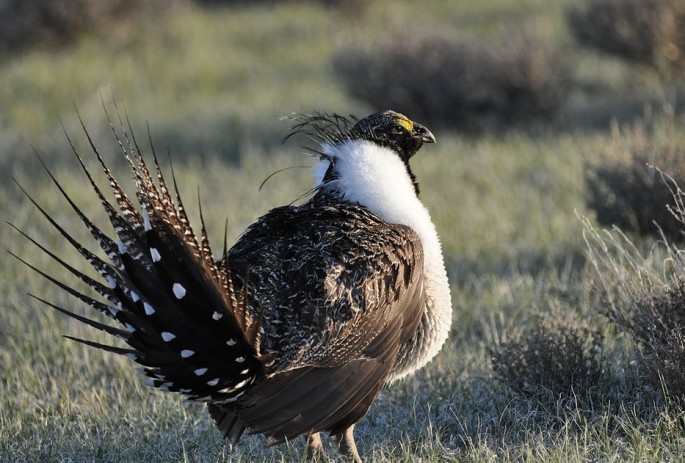The indigenous game bird called the sage grouse is not yet considered as an endangered species but scientists are already becoming concerned since rampant and destructive wildfires across the bird's natural habitat are already threatening the species in the Great Basin region in the United States.
According to a new study by the U.S. Geological Survey, researchers monitored the effects of wildfires and the climate on the growing sage grouse population for a period of 30 years. The team developed a model that showed simulations of post fire recovery periods of sagebrush habitats.
The sage grouse dwells in sagebrush grasslands and lives on a diet of sagebrush. They also consume much of the leaves of the plant before breeding season.
Based on forecasts, researchers discovered that if the current wildfire trend does not decrease in force and intensity, a steady drop in populations can occur among more sage grouse living in the Great Basin region. Scientists also predict that half of the current grouse population in the area will disappear by the mid 2040s.
According to Peter Coates of the USGS Western Ecological Research Center, these simulated models reveal how the sage grouse populations' persistence can weaken when their ecosystems are compromised along with their habitats being destroyed by constant wildfires. Warmer and drier climates and an invasion of annual grasses can increase the occurrence of wildfires in the Great Basin.
This report is released on Thursday which is crucial for the September 30 deadline where the U.S. Fish and Wildlife Service will soon arrive at a decision about putting the bird under federal protection via the Endangered Species Act.
The birds already reached a high population of 16 million however wildfires and other environmental threats can list them as an endangered species. Some experts believe that this can also have negative repercussions on the economic states of other Western states.
When the bird is already declared as endangered, there will be huge areas of land that will not be used anymore for other purposes since the sage grouse already inhabits them. These lands produce crude oil, coal, natural gas and farms for beef where 11 states will be greatly affected since they are located in sage grouse territory.
The endangered bird can cost the U.S. over $5.6 billion in economic losses.



























